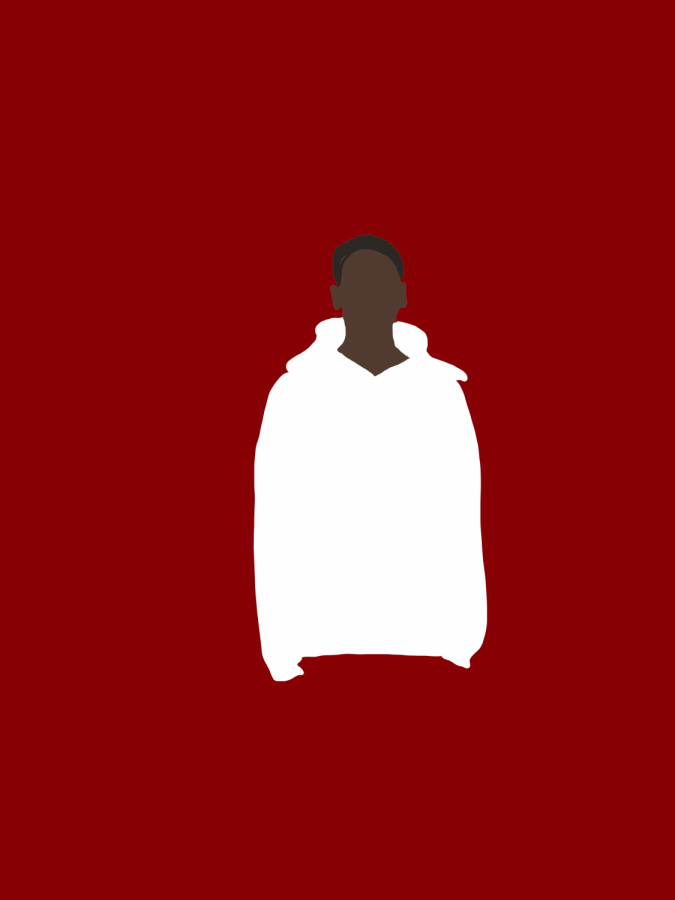Vetements and capitalist abstraction
February 22, 2021
In the middle of the 20th century, capitalism found itself in a transition as it transformed into a version of itself that attempted to be physically identical to, but materially different from, the world as it actually exists. Take, for example, Kool-Aid. The powder-based drink presents the image of being derived from cherries, when, quite obviously, it has little to nothing to do with the actual fruit. The image of the cherry on the package is merely a stand-in for a cherry as it exists in the real world. This abstraction progresses to the point when Kool-Aid introduces flavors such as Blue Raspberry and Pink Lemonade, concepts that bear no resemblance to things that exist within the real world but make sense within the context of an abstract version of reality. Soon, consumers are unable to make a distinction between a beverage that was made from actual fruit and one made from a powder, the line between the real world and this synthetic version of reality has been blurred completely. Though this may seem harmless, it bears real implications. The rise of Trump in 2016, for example, can be explained greatly by the media’s spectacularization of him more than his direct actions. As his 2016 presidential bid became saturated with scandal and outlandish tweets after another, he garnered more and more media coverage as his actions warranted more and more viewers and thus more and more ad revenue for TV networks and newspapers. This culminated into a four-year-long snowball effect that only could end with him calling to dismantle the very system that got him elected.
Just as it is seen within our politics, capitalist abstraction is seen within art, specifically within fashion. When considered in the context of other fine arts, such as painting, sculpture, literature and theater, fashion is often forced to take a backseat to these more ‘intellectual endeavors.’ Often perceived as vain and abstracted from the material world, the high fashion community is easy to write off. However, doing so ignores the very important role that clothes play in society. Clothes, just as much as they fulfill a material function in keeping the wearer warm or protecting the wearer from weather, fulfill a social role as well. Clothes are a language. They tell us about politics, the world and how communities exist within it. Just as much as we think that we ‘own’ the garments that we possess, in a certain way, clothes own us as well, dictating how we perform and how we are perceived. Through this process, garments themselves are imbued with a degree of political power that can either perform within or against the hegemonic systems of control that rule the modern world. The role of the clothing designer is to facilitate the conversation that exists between the wearer, the object and the context in which both exist.
The abstraction of capitalism is well demonstrated through the rise of high fashion in the past fifty years. In the 1950s and ‘60s, haute couture houses such as Balenciaga, Dior and Yves Saint Laurent produced opulent dresses constructed from luxurious textiles and adorned with precious gems that warranted their high prices. With the rise of ready-to-wear in the late 20th century, clothing could hold the symbolic place of luxury houses while carrying no material value. T-shirts with the Gucci logo are sold at over $600 not because that is the actual price to create the garment but because they represent the quality and craftsmanship of the Italian company, in the same way that Kool-Aid represents real fruit. In the late ‘90s, the anti-fashion movement pioneered by designers such as Martin Margiela, Rei Kawakubo and Hussein Chalayan challenged the form of established luxury clothing by deconstructing garments and fueled the objects with a social and political message. This movement finds its way to New York in the first decade of the 21st century with the rise of luxury streetwear, the next level of capitalist abstraction. Now, a Supreme or Off-White T-shirt no longer represents luxury; it represents the idea of luxury. It is a synthetic copy of a synthetic copy of luxury clothing.
Vetements, the now legendary luxury ready-to-wear line that rocketed its founder and creative director Demna Gvasalia’s superstar status represents the next level of abstraction in fashion. In the past decade of clothing, we have seen brands utilize social media and the internet in order to sell an existing product. Instagram hype was established off of brands and communities that already exist. Vetements represents an important change in how clothes are conceptually created. Their collections are kitsch, filled with loud colors, detailed graphics, ironic slogans and either extremely oversized or undersized silhouettes. Unlike some of his contemporaries, Gvasalia is not creating clothes that respond to meme culture; his clothes are meme culture. From casting an entire lookbook of celebrity lookalikes to presenting their spring-summer collection within a Parisian McDonalds to their most recent 165 look FW 2021 collection, each season Vetements demands the front page of the fashion internet.
Vetements is a spectacle, but it is a spectacle created with intention. Gvasalia grew up in Soviet Georgia, which only gained its independence in the early 1990s and remained under Russian occupation through the decade. Just as much as the clothes convey a message about our current momentas internet consumers, Vetements tells the story of youth and resistance that took place in Eastern Europe at the end of the 20th century. Most notably, their Spring/Summer 2019 and Fall/Winter 2020 collections are rich with references to post-Soviet culture. Sweatpants are reminiscent of Soviet prisoner attire. Many images of popular dark-web websites such as The Silk Road and The Pirate Bay are printed on T-shirts and hoodies, in addition to numerous references to major multinational entities such as Interpol, the FBI and DHL logistics. The Fall/Winter 2020 collection feels particularly reminiscent of early Raf Simons presentations, challenging the Western notion of democracy and interrogating our ideas of who is able to participate within it. These dark themes are contrasted with ‘90s nostalgia through the collections, most notably Killa Cam pink furs, hoodies printed with the face of Russian pop icon Viktor Tsoi, along with numerous references to Kurt Cobain.

Design, specifically fashion, furniture and architecture are burdened with being of service to the consumer while also reflecting the social, political and aesthetic moment in which it exists. Vetements is not the most radical fashion show of all time, nor does it try to be. It is authentic, telling a specific story about a time and place that is meaningful to its creator. Its beauty comes from its ability to intervene and push the very definition of avant-garde. Vetements pushes our contemporary language of design by challenging our understanding of what a high fashion brand is and the role that it plays in the larger fashion industry. Through its boundary-pushing nature, the brand is shaping how our current moment will be remembered, not just from the perspective of fashion, but art and culture in general.
The incredible power of Vetements as an art project comes from its unique ability to occupy the space between a definitive, understandable meaning and spectacularized meaninglessness. Its garments are relevant both in the aesthetic context of the contemporary streetwear movement as well as in the context of post-war Europe. Through working in both of these traditions, Vetements shows us what great design is and can be. Gvasalia’s work exists in a context that a very specific and small audience can fully appreciate while the rest of the world has the privilege of being spectators and drawing their own conclusions. Fashion and, as an extension, art give us the ability to articulate the relationship that we have with the world in a way that is new and authentic. Instead of rushing to explanation, Demna moves towards abstraction, as the references to post-Soviet culture become more abstract and hard to distinguish. Through this abstraction, we gain a new perspective on the systems of power that dominate the world and influence how we exist within it.












